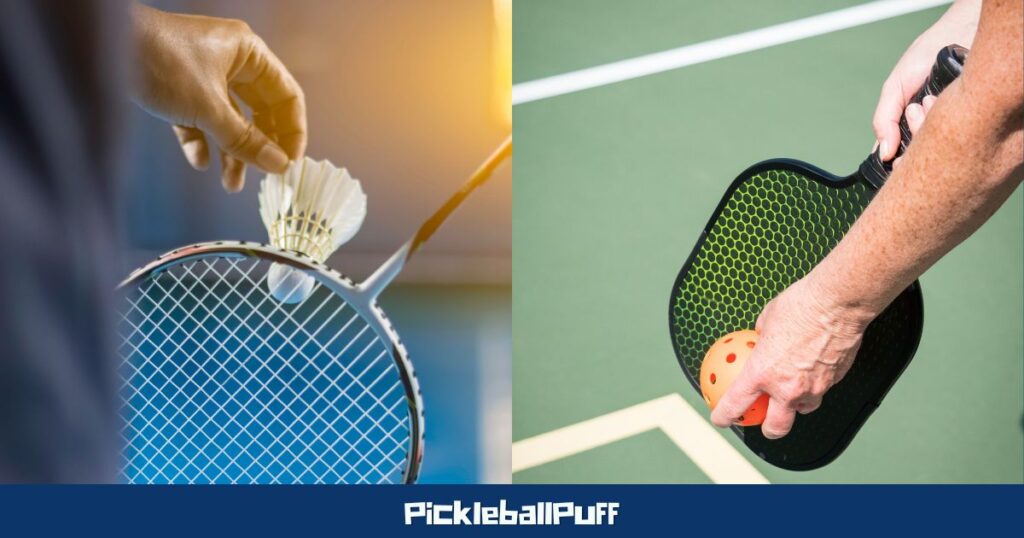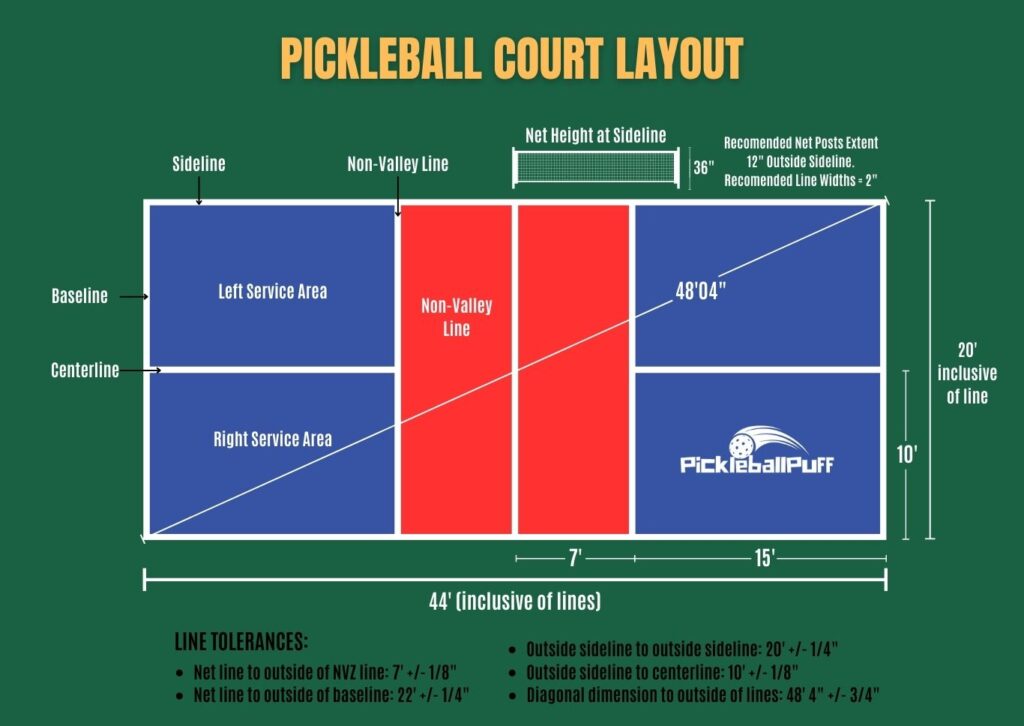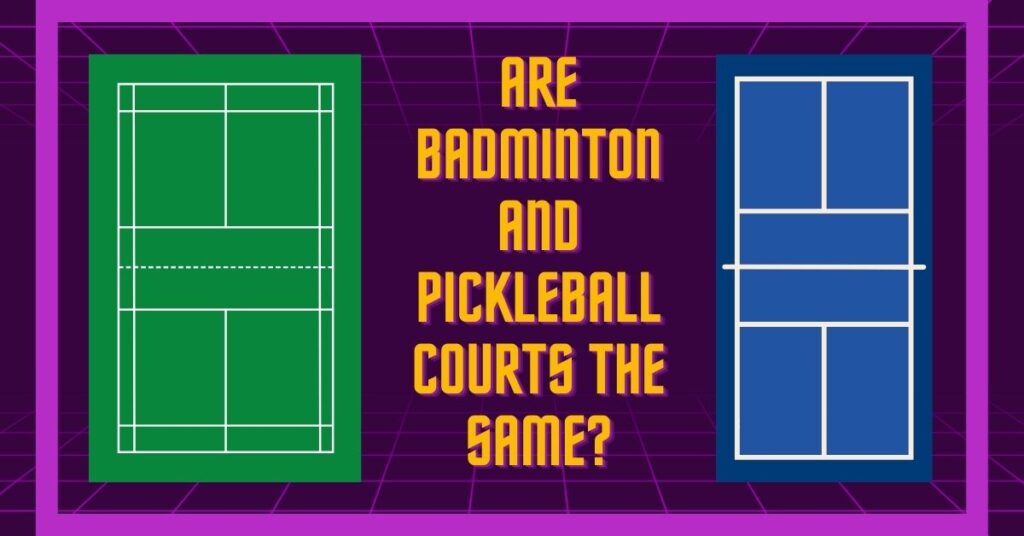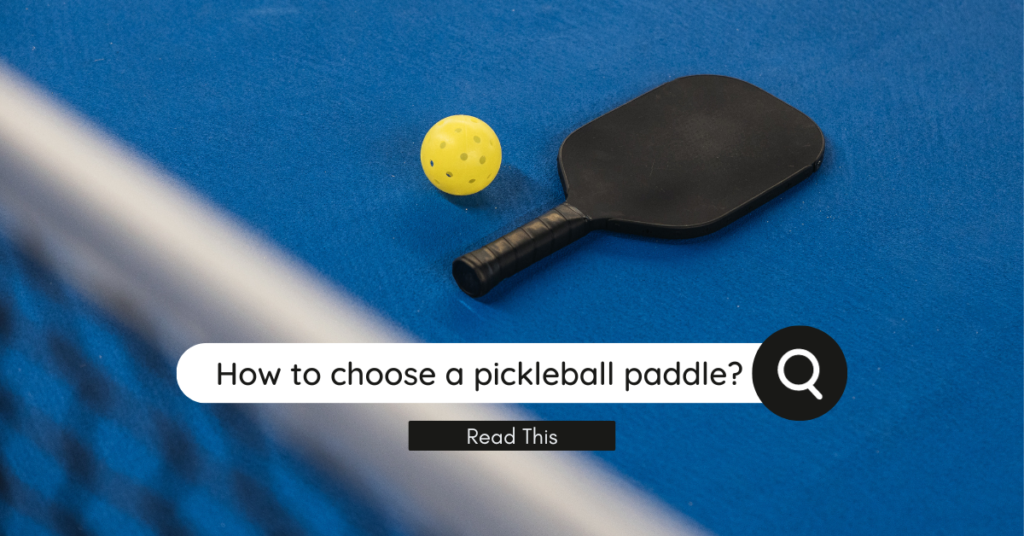Ever wondered if the courts for badminton and pickleball are cut from the same cloth? It’s a common question, especially for those navigating the exciting realms of racket sports. In this exploration of court dynamics, we’ll unravel the similarities and differences between badminton and pickleball courts. So, let’s step onto the court and decipher whether they’re sharing the same game plan or dancing to entirely different beats.
Badminton and pickleball courts are not the same, as they have different dimensions and rules. Badminton courts are rectangular and larger, while pickleball courts are smaller and have a different shape.
Understanding Badminton Courts
When it comes to understanding badminton courts, it is important to know their dimensions and key features. A badminton court is the playing area where the sport of badminton is played. The dimensions and features of a badminton court not only determine the boundaries of the game but also ensure fair and enjoyable play.
Dimensions Of A Badminton Court
The dimensions of a badminton court are defined by the Badminton World Federation (BWF). These dimensions are crucial for maintaining the integrity and standardization of the game. The following table showcases the dimensions of a standard badminton court:
| Aspect | Measurement |
|---|---|
| Length | 13.4 meters (44 feet) |
| Width | 6.1 meters (20 feet) |
| Outer Boundary Lines | 40mm wide |
| Net Height | 1.55 meters (5 feet 1 inch) at the edges, 1.524 meters (5 feet) at the center |
As you can see, a badminton court is rectangular in shape and has specific length and width measurements. It is important for players to familiarize themselves with these dimensions in order to make accurate shots and understand the boundaries of the game.
Key Features Of A Badminton Court
In addition to the dimensions, there are key features that make a badminton court unique:
- Lines: The court is marked with various lines that define different zones and serve as boundaries for the game. These lines include the outer boundary lines, center line, and service lines. Each line has its own purpose and importance in the gameplay.
- Net: A badminton court is divided into two equal halves by a net. The net has specific height requirements, as mentioned earlier, and should be taut to facilitate fair play. The net divides the court into the front and back halves, defining the positions of the players.
- Tape: Some areas of the court, such as the lines and net posts, may have tape applied for better visibility and identification. This helps players to clearly distinguish the boundaries and make accurate shots.
Understanding the key features of a badminton court is essential for players to conduct themselves properly and play the game effectively. These features contribute to the overall experience of playing badminton and ensure a level playing field for all participants.

Exploring Pickleball Courts
When it comes to exploring pickleball courts, there are certain dimensions and key features that make them unique. Understanding these aspects is essential for players and enthusiasts looking to set up or play on a pickleball court. In this section, we will delve into the dimensions of a pickleball court and discuss the key features that make it a suitable playing space for this popular sport.
Dimensions Of A Pickleball Court
The dimensions of a pickleball court have specific measurements that adhere to the standards set by the International Federation of Pickleball (IFP). These dimensions ensure a consistent playing field for all players. A pickleball court typically measures 20 feet wide and 44 feet long for both singles and doubles matches. Within this playing area, there are specific zones that players must be aware of.
The court is divided into halves by a 34-inch tall net. The net is positioned directly in the center of the court, extending downward to a height of 36 inches at its center. This height allows for fair gameplay and prevents any disadvantage to players based on the net’s position or height. The net is securely fastened to posts, ensuring stability and consistency throughout the game.
Key Features Of A Pickleball Court
In addition to the dimensions, there are certain key features that make a pickleball court suitable for playing this fast-paced and exciting sport. These features contribute to the overall player experience and facilitate fair gameplay.
- Playing Surface: The playing surface of a pickleball court is typically made of a hard material, such as asphalt or concrete. This provides a solid and durable foundation for players to move on and ensures consistent ball bounces.
- Boundary Lines: The court is marked with boundary lines that indicate the playing area and define the boundaries within which the game is played. These lines are usually in contrasting colors, making them easily visible to players during gameplay.
- Non-Volley Zone: Near the net on each side of the court, there is a non-volley zone, also known as the kitchen. This zone restricts players from hitting the ball before it bounces within this area, creating strategic opportunities and preventing players from gaining unfair advantages.
- Sideline and Baseline: The court is also marked with sideline and baseline, which determine whether a shot is in or out. These lines help players and officials make accurate judgments during the game.
By adhering to the specified dimensions and incorporating the key features, a pickleball court provides players with a standardized and optimized playing space. Whether for recreational or competitive play, these courts offer an enjoyable and challenging experience for pickleball enthusiasts of all levels.
Comparing Badminton And Pickleball Courts

Badminton and pickleball are both popular racket sports that can be played on a court. While they share some similarities, such as the use of a net and the objective of hitting a ball over the net, there are also notable differences between the two. Understanding these differences can help players choose the right court for their preferred game. In this article, we will compare badminton and pickleball courts, focusing on court size and dimensions, net and boundary differences, and playing surface characteristics.
Court Size And Dimensions
In terms of court size and dimensions, badminton and pickleball courts differ significantly. Badminton courts are rectangular in shape and measure 44 feet in length and 20 feet in width for singles matches. For doubles matches, the court widens to 44 feet in length and 23 feet in width. The court is divided by a net that is positioned at a height of 5 feet in the center and 5 feet, 1 inch at the posts.
Pickleball courts, on the other hand, are smaller in size compared to badminton courts. They are rectangular and measure 44 feet in length and 20 feet in width for both singles and doubles matches. The net height for pickleball is 36 inches at the sidelines and 34 inches at the center.
Net And Boundary Differences
The net used in badminton differs from the one used in pickleball in terms of height and material. Badminton nets are typically higher and made of fine mesh. The height of the net is important in badminton as it affects gameplay, allowing players to hit the shuttlecock at different angles and heights.
Pickleball nets, on the other hand, are lower in height compared to badminton nets. They are made of a solid material, such as nylon or vinyl, with a mesh size of approximately 2 inches. The lower net height in pickleball allows for easier shots and a different style of gameplay.
In terms of boundaries, badminton courts have specific lines that mark the boundaries of the court. These lines are used to determine whether a shot is “in” or “out” during gameplay. Pickleball courts may also have boundary lines, but they are not mandatory and can vary depending on the location of play.
Playing Surface Characteristics
The playing surface of a badminton court often consists of a wooden or synthetic flooring. This type of surface provides a smooth and level playing area, allowing players to move quickly and make precise shots. The surface also contributes to the speed and bounce of the shuttlecock.
Pickleball courts can be played on various surfaces, including asphalt, concrete, or even indoor gym floors. The surface material used can affect the speed and bounce of the pickleball, providing a different playing experience compared to badminton.
Frequently Asked Questions Of Are Badminton And Pickleball Courts The Same
What Sport Has The Same Size Court As Pickleball?
Pickleball has the same court size as a badminton court.
Can You Use A Badminton Net To Play Pickleball?
Yes, a badminton net can be used to play pickleball.
Can You Play Badminton On A Tennis Court?
Yes, you can play badminton on a tennis court.
Can You Play Pickleball And Tennis On The Same Court?
Yes, you can play pickleball and tennis on the same court. Pickleball lines are usually added to a tennis court, allowing both games to be played. As both sports have similar dimensions, the court can be easily adapted, creating a versatile space for players to enjoy both games.
Are Badminton And Pickleball The Same Sport?
No, badminton and pickleball are two different sports with their own unique rules and equipment.
Conclusion
While badminton and pickleball do share some similarities, such as the use of a racket, a net, and a court, they are distinctly different sports. Badminton is a fast-paced game that requires agility and precision, while pickleball is more accessible and can be enjoyed by players of all ages and skill levels.
Whether you prefer badminton or pickleball, both sports offer unique experiences and opportunities for exercise and socializing. So, go ahead and give both a try and see which one you enjoy the most!



